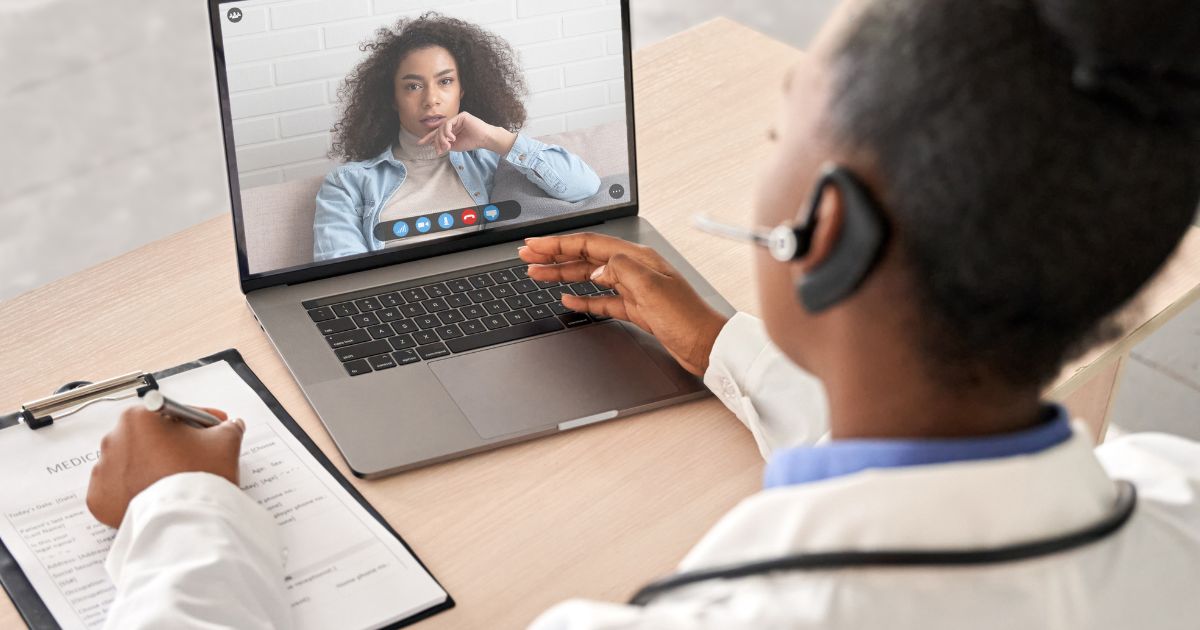Telehealth allows health care providers to connect with patients through visual communication options like webinars and video chats. While this method of interacting with patients is not new, it has grown by leaps and bounds during the COVID-19 pandemic when it became necessary to provide remote care to patients. However, despite the wide range of advantages that telemedicine offers, it is important to understand some of the risks involved. Like traditional medical care, health care providers can make mistakes when administering care through telemedicine. If negligence was a factor, you may be eligible for financial compensation by filing a medical malpractice lawsuit against the doctor, or the telehealth company. An experienced medical malpractice lawyer can assist you with this process and secure the financial compensation you deserve.
What Is Telehealth?
Also referred to as “telemedicine,” telehealth allows your health care provider to discuss, diagnose, monitor and treat a range of health issues without you having to come to the office. You can connect with your health care provider using a range of technology, including web monitoring apps, videoconferencing and smartphone apps. Like traditional medicine, telemedicine allows real time consultations, where you can discuss your symptoms and ask questions, and your physician recommends the best course of treatment, or arrange for an in-office visit if necessary. You can seek treatment via telehealth for everything from the respiratory and stomach infections and mental health treatment to post-surgical follow-up and physical and occupational therapy. The following are examples of some of the additional benefits of telehealth:
- Reduced exposure to the COVID-19 virus, the flu and other contagious illnesses
- Ensure that you receive the quality health care that you need without having to leave your house
- Provides access to specialists that practice far from where you live
- Appointments are generally available sooner than in-person appointments, although this depends on the doctor, and the reason for your appointment.
What Are the Main Risks of Telemedicine?
While telemedicine certainly offers patients a more convenient health care option, there are risks involved with using telehealth as a substitute for an in-person doctor visit.
- Misdiagnosis: According to an article published in Medical Economics, 45 percent of all telehealth medical malpractice claims involve the misdiagnosis of cancer, stroke and infection. In most cases, this was due to technology issues like poor connections, glitchy audio or video streaming, and technology failures that make it difficult for the patient to hear or understand what the health care provider is saying. This can be prevented by testing the audio and video equipment prior to the appointment, ensuring that you have access to a stable, high-speed internet connection and asking questions throughout the appointment to make sure that you understand what your health care provider is saying.
- Data security: Telehealth relies heavily on technology, and if patient data is not properly stored or protected, it is vulnerable to being hacked. In addition, when physicians rely too heavily on technology to make an accurate diagnosis, this can lead to medical errors. If the telehealth company fails to take the necessary security measures, there is a risk of medical malpractice in the form of data security. Proactive steps like maintaining and updating software on a regular basis, conducting ongoing risk assessments and protecting the software with firewalls can help reduce the risk of data security issues.
- Privacy protection: HIPAA compliance is required for all health care services, including virtual services and telehealth organizations. If a doctor or practice is not in compliance with HIPAA privacy rules, and patient information is exposed, this is an example of medical malpractice. It is highly recommended that telemedicine providers review all HIPAA rules and regulations and provide yearly training, provide detailed procedures and protocol on how to properly handle patient data, and be prepared to respond immediately if patient data is leaked or stolen. This will help prevent an accumulation of compliance penalties and liabilities.
- Insufficient information: Telehealth can limit a health care provider’s ability to analyze symptoms that may not be visibly obvious. This could lead to a misdiagnosis, a failure to diagnose or a misunderstanding about the recommended treatment protocol.
- Internet prescribing: When health care providers prescribe medication without thoroughly reviewing the patient’s medical history to determine whether he or she has any allergies, or is taking medication that could interact with other prescription medication, this is an example of medical malpractice. Over-prescribing is another issue that can occur, which can lead to serious health complications.
What Are the Main Elements of a Medical Malpractice Claim?
In order to have a successful medical malpractice claim, you will need to be able to prove the following elements. This also applies to claims involving telemedicine.
- Duty: You will need to be able to prove that a doctor-patient relationship had been established. This can easily be proven by obtaining copies of medical records and confirming past appointments with the health care provider.
- Breach: In order to prove that your health care provider breached his or her duty of care, you will need to demonstrate that he or she failed to provide the acceptable standard of care that another similarly trained health care provider would have provided in a similar situation.
- Causation: You will also need to prove that the breach in care caused your injury or health complication. This can be more difficult to prove. Oftentimes, an expert medical witness will be called to offer his or her professional opinion as to whether the doctor involved in the case was negligent.
- Damages: Finally, you must be able to prove that you sustained damages as a result of the negligent care you received. A dedicated medical malpractice lawyer will determine whether your case meets these requirements and assist you with the claims process.
Dayton Medical Malpractice Lawyers at Wright & Schulte LLC Secure Compensation for Victims of Telehealth Malpractice
If you or a loved one suffered an injury or a health complication while being treated by a telehealth provider, contact the Dayton medical malpractice lawyers at Wright & Schulte LLC as soon as possible. We will help you navigate the claims process, ensure that your legal rights are protected and secure that maximum financial compensation you deserve. We will continue to fight for you until you are completely satisfied. To schedule a free, confidential consultation, call us today at 937-222-7477 or contact us online. Our offices are located in Dayton, Ohio, where we serve clients in Cincinnati, Columbus, Cleveland, Centerville, Toledo, Youngstown, and Miamisburg.



